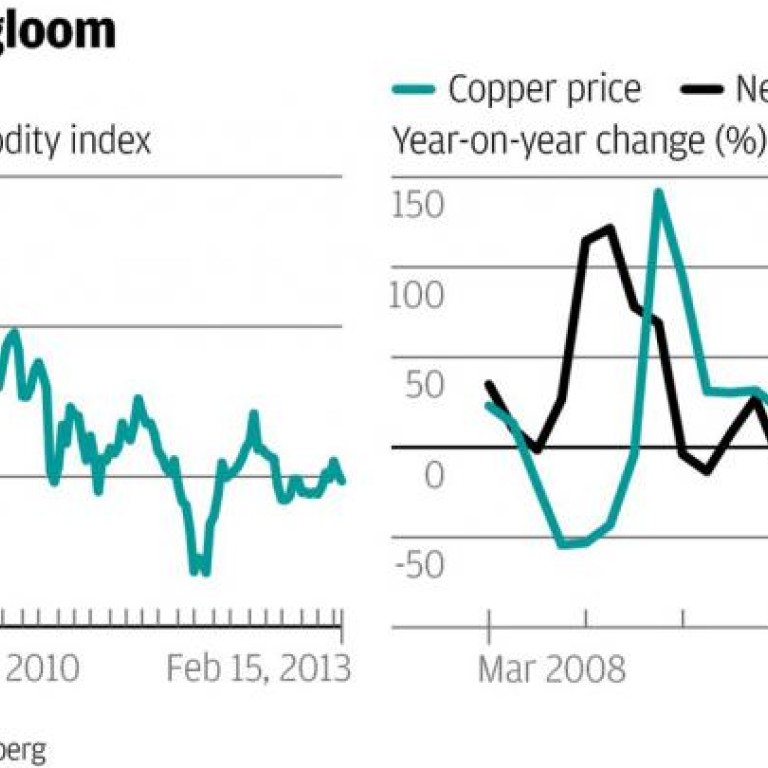
Commodity bears should look again at China's credit growth
While analysts have painted a gloomy outlook for the resources sector, the surge in new financing suggests robust demand for commodities
There's been a lot of chatter over the past couple of weeks that the 10-year-old "super-cycle" in commodities may have peaked and that prices are now set to trend lower over the coming years.
You can see why investors are worried. As the first chart below shows, commodity prices have struggled to perform lately. Since its early 2010 peak, the Thomson Reuters/Jefferies CRB Commodity Index has fallen by almost 20 per cent.
That slump has caused a lot of pain in the resources sector. Last week, mining giants Rio Tinto and Anglo American both announced full-year losses for 2012 after heavy write-downs on their investments.
Over the next few weeks, other big miners including BHP and Vale are expected to announce big falls in their net profits for last year.
To make things worse, commodity analysts don't see much chance of any revival any time soon.
After China recorded its weakest economic expansion since 1999 last year, talk abounds that the world's biggest consumer of commodities is shifting to a structurally lower growth trajectory.
And with the new leadership in Beijing promising to switch to a development model that relies less on big investment projects and more on household consumption, growing numbers of commodity sceptics are warning that China's future demand for resources is likely to be subdued compared with the heady growth of recent years.
Even analysts at Goldman Sachs, long among the market's most strident commodity enthusiasts, are having second thoughts. Last week, they forecast that commodity prices would rise just 1 per cent over the next 12 months.
With pundits widely predicting double-digit returns from equity markets this year, it is small surprise that investors are scaling back their exposure to commodity markets.
According to a report earlier this month, the California Public Employees' Retirement System, the largest pension fund in the United States, has slashed its investments in commodity indices by more than half over recent months.
Investors are also bailing out of commodity hedge funds. After specialist commodity funds lost a cumulative 5 per cent over 2011 and 2012, investors have reportedly pulled 20 per cent of their assets from the sector.
All this sounds like desperately bad news for commodities as an investment. But perhaps resource bulls shouldn't be too downhearted about the prospects for commodity markets this year.
Outflows from futures markets and index funds may weigh on prices over the short term. But there are some powerful signals that user demand in China, the world's dominant commodity consumer, may be picking up.
The country's commodity demand is powered by a combination of investment and speculation. And both are driven by credit. When credit is freely available, local governments and state-backed companies embark on orgies of resource-intensive investment, while speculators stockpile commodities.
The effect on prices is marked. As the second chart shows, a sharp increase in the China's "total social financing" measure of funding typically drives a jump in the international copper price over the following six months.
As a result, it seems likely that China's surge in new financing over the second half of last year will soon feed through to the copper market, driving an upswing in prices.
We can already see the effect in the iron ore market, where prices have almost doubled since September.
And with total social financing jumping by a record 2.54 trillion yuan (HK$3.13 trillion) in January - 15 per cent faster than at the height of China's credit boom in 2009 - the country's demand for commodities this year looks likely to be robust.
So don't write investments in the sector off just yet.

